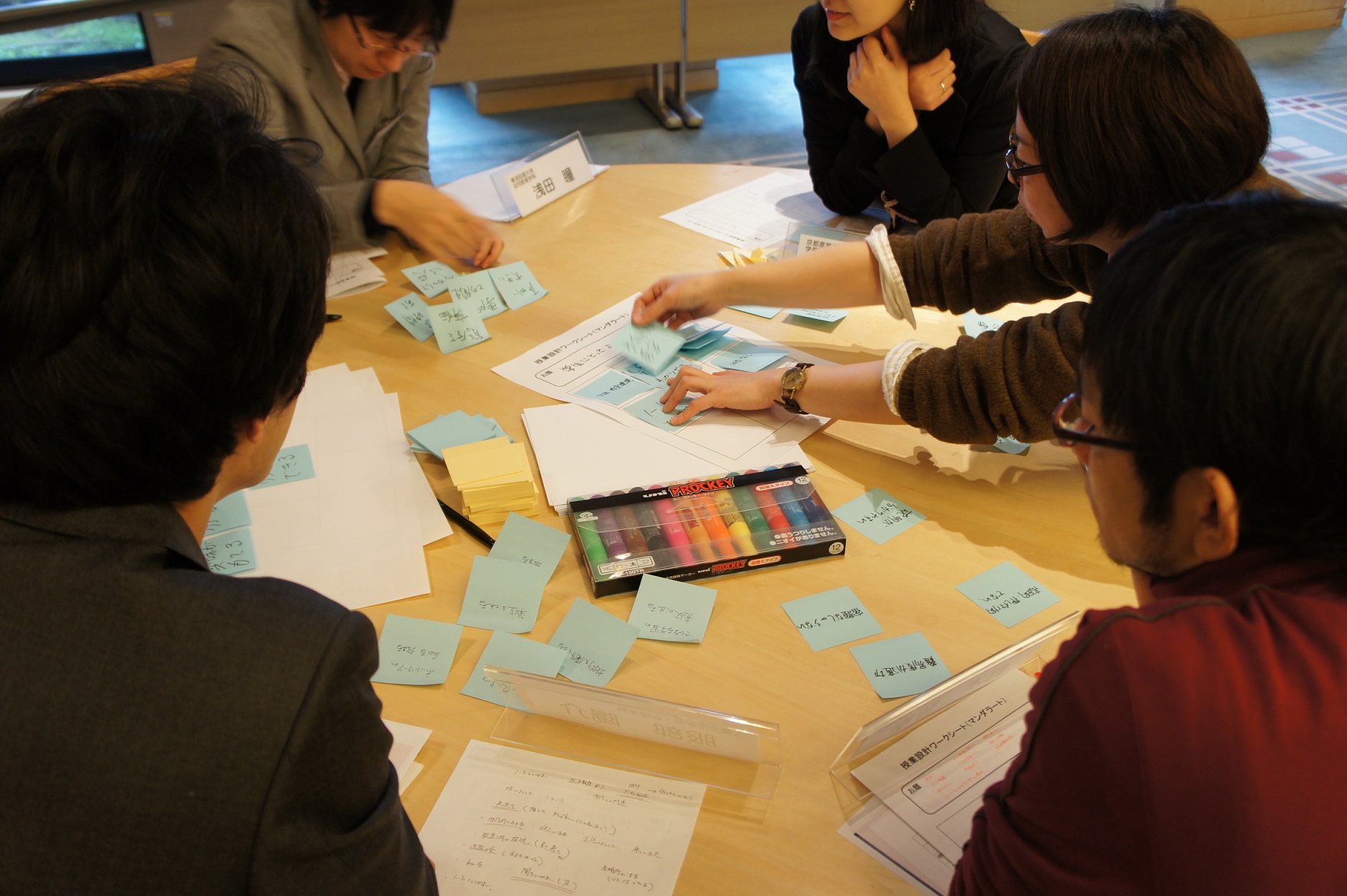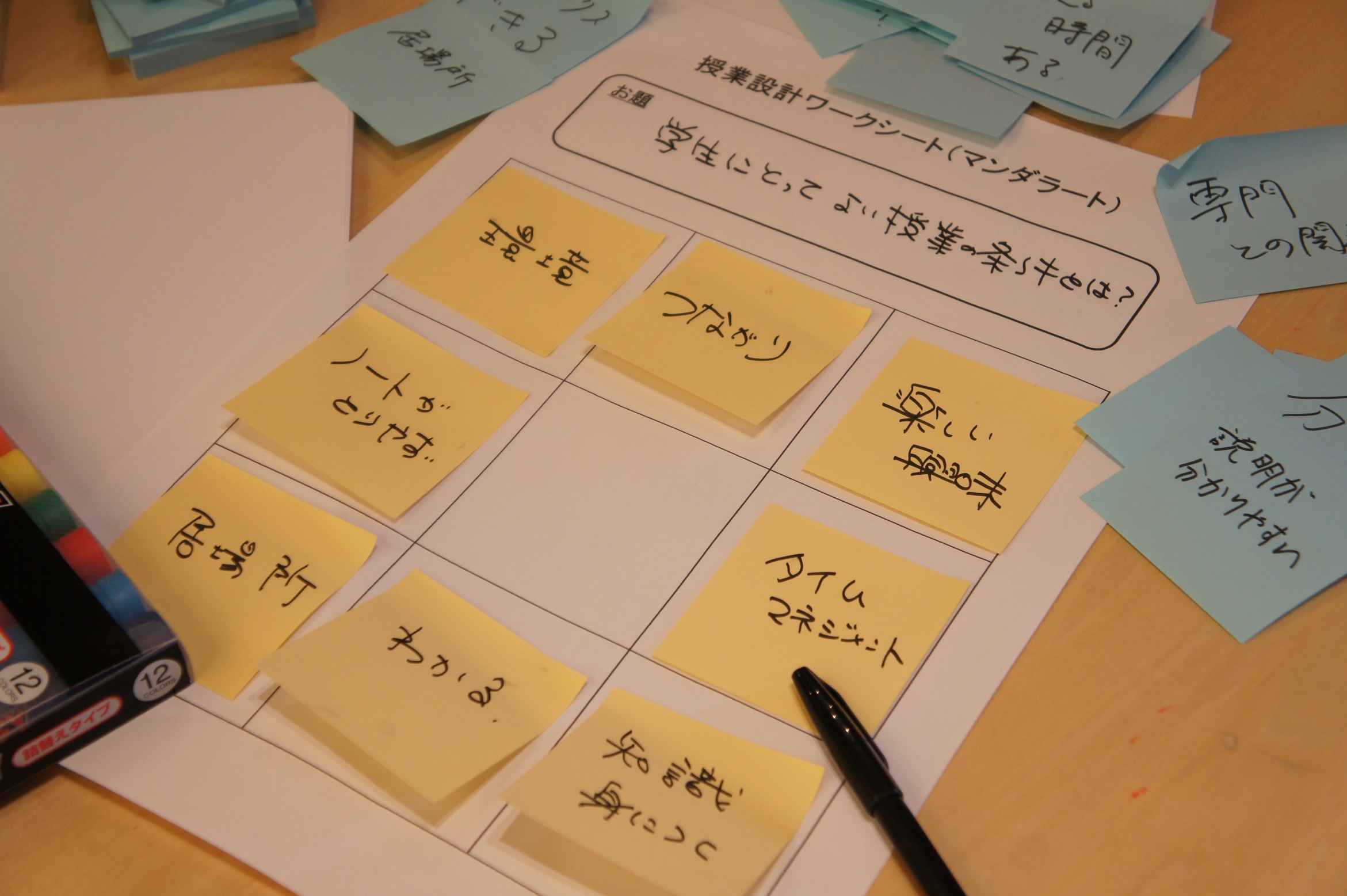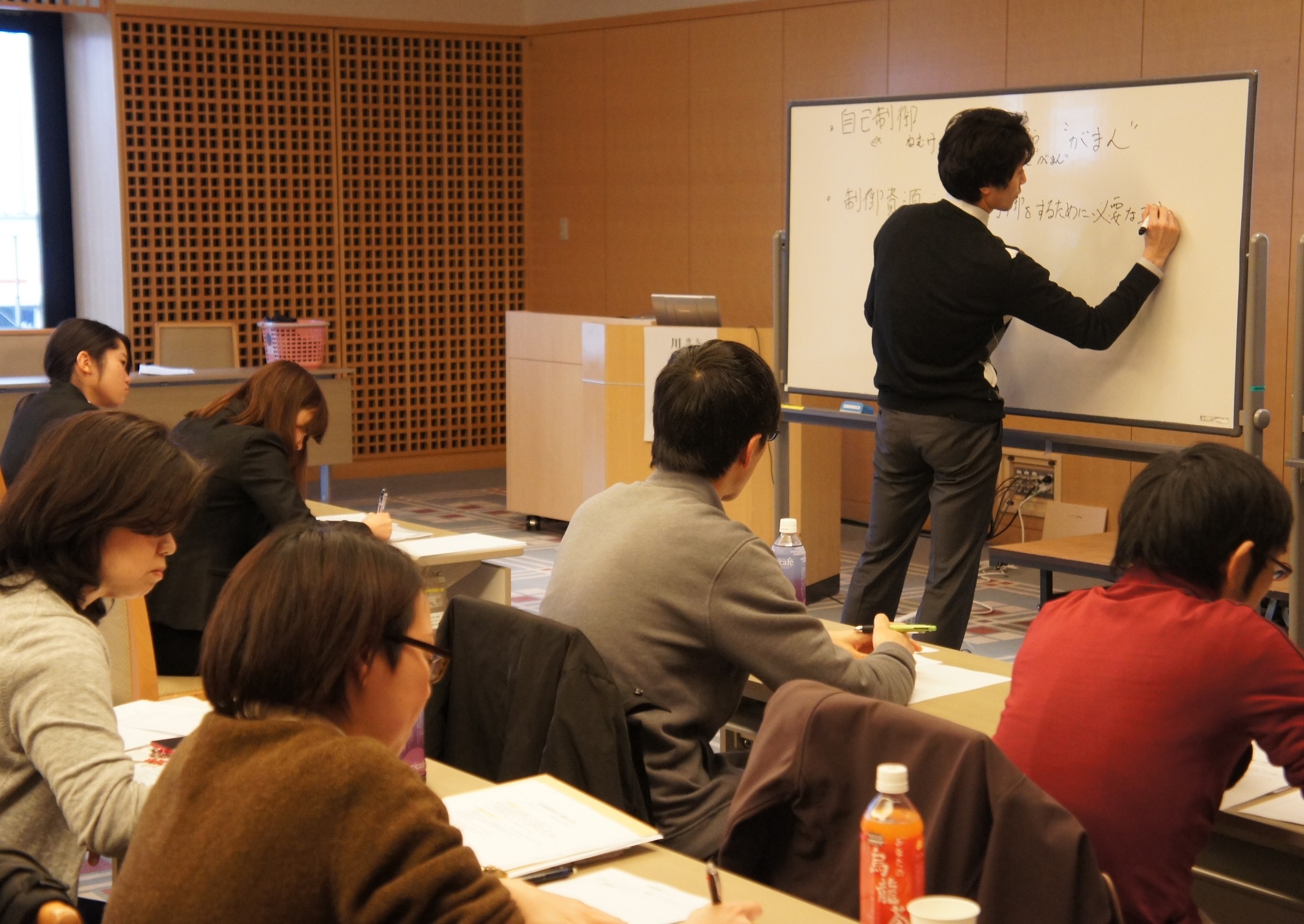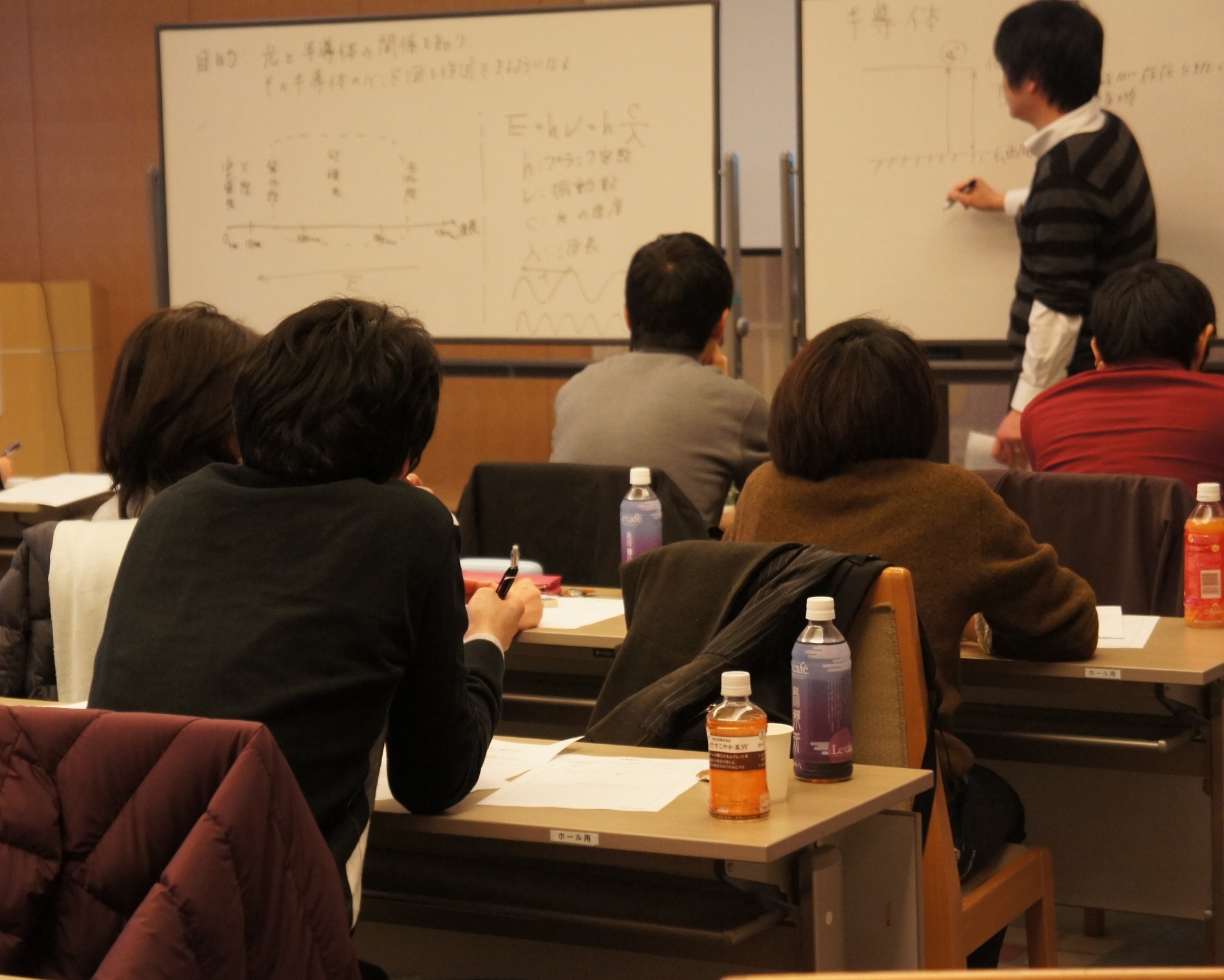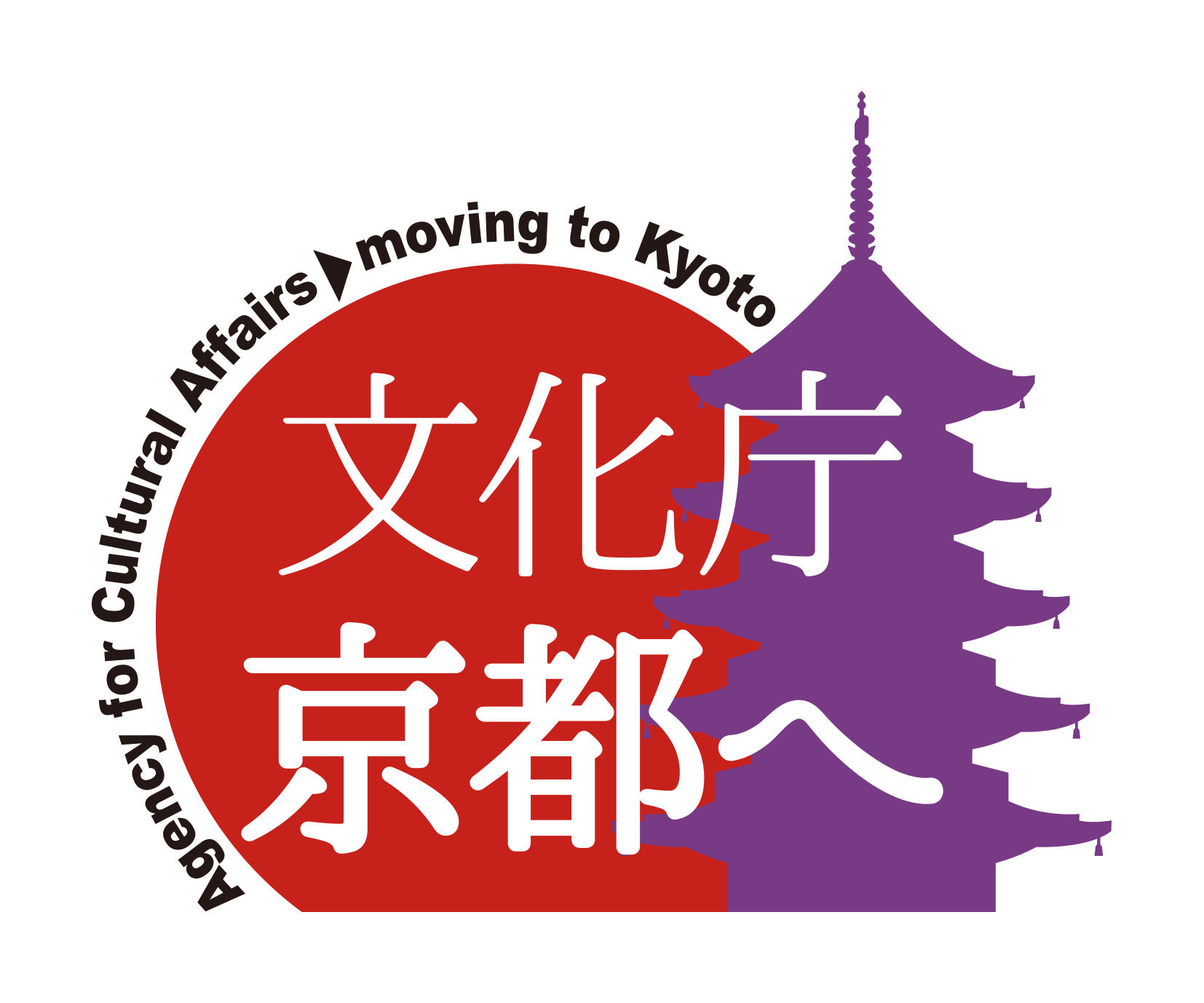Business Overview
As an organizational effort for faculty members to improve and enhance their teaching content and methods, the University Consortium Kyoto has been promoting FD activities in the Kyoto area together with member universities since 1995, shortly after its establishment.
The FD Joint Training Program for New Teachers is a training program that complies with the “Standard Framework for New Teachers” proposed by the National Institute for Educational Policy Research with the aim of equipping students with the knowledge and skills necessary for university teachers.
Outline of the event
- Date & Time
- Program A
Saturday, September 6, 2014, 13:00-18:00
Sunday, September 7, 2014, 10:00 a.m. – 5:00 p.m.Program B
Saturday, March 7, 2015, 13:00-17:00
Sunday, March 8, 2015 9:30 a.m. – 5:00 p.m. - Venue
- Campus Plaza Kyoto
- Target
- Faculty members of the University Consortium Kyoto member universities and junior colleges within a few years
* The scope of coverage is voluntary for each member school. - Organizer
- University Consortium Kyoto
- Contents
- New Teacher FD Joint Training Program A Flyer [Click here for details]
New Teacher FD Joint Training Program B Flyer [Click here for details]
| Time | Content |
|---|---|
| Day 1 13:00~18:00 |
1. Career Development for FDs and University Teachers Lecturer: Shinji Matsumoto (Professor, Bukkyo University) |
| 2. Basic knowledge and workshops for lesson design Lecturer: Takashi Yasuoka (Professor, Ritsumeikan University) |
|
| Day 2 10:00~16:30 |
3. Basic knowledge and workshops for learning support and special needs Lecturer: Jun Murata (Assistant Professor, Support Room for Students with Disabilities, Kyoto University) |
| 4. Basic knowledge and workshops on learner-centered class management Lecturer: Masanori Shinohara (Vice President, Professor, Bukkyo University) |
| Time | Content |
|---|---|
| Day 1 13:00 ~17:00 |
1. Kyoto City of Universities and Students Lecturer: Mina Yamamoto (Deputy Secretary-General, University Consortium Kyoto) |
| 2. Workshops for grading Lecturer: Masashi Wakamatsu (Professor, Kyoto Sangyo University) |
|
| Day 2 9:30 ~17:00 |
3. Workshops for lesson design Lecturer: Kiyo Kawakami (Research Fellow, University Consortium Kyoto) |
| 4. Classroom Practical Workshop |
Implementation Report
Hosted by the University Consortium Kyoto: Joint Training Program ≪ for New Faculty FDs≫
■New Teacher FD Joint Training ≪Program A≫ Implementation Report
On Saturday, September 6 and Sunday, September 7, the Consortium of Universities Kyoto held the “2014 Joint Training Program ≪Program A≫ for New Faculty Members.”
The purpose of this training program is to support educational activities by providing training to new teachers in cooperation with member universities, and at the same time, to provide a place for exchange beyond the boundaries of the university, a program is organized based on the “Standard Framework for New Teacher Training” of the National Institute for Educational Policy Research, and is conducted every year. Participants who attend both Program A in September and Program B in March will receive a certificate of completion.
This year, we welcomed 12 participants from 8 universities.
■Training Day 1
The training began with a lecture by Professor Shinji Matsumoto of Bukkyo University on “Career Development of FD and University Teachers.”
Dr. Matsumoto compared it with the FD in the UK, where he participated in the overseas tour, and explained the beginning of FD, the subsequent process, and the current situation.
At the end of the lecture, he stated that the significance of participating in the training was not only to gain new information, but also to expand one’s network and become a lecturer or mentor junior students in the future.
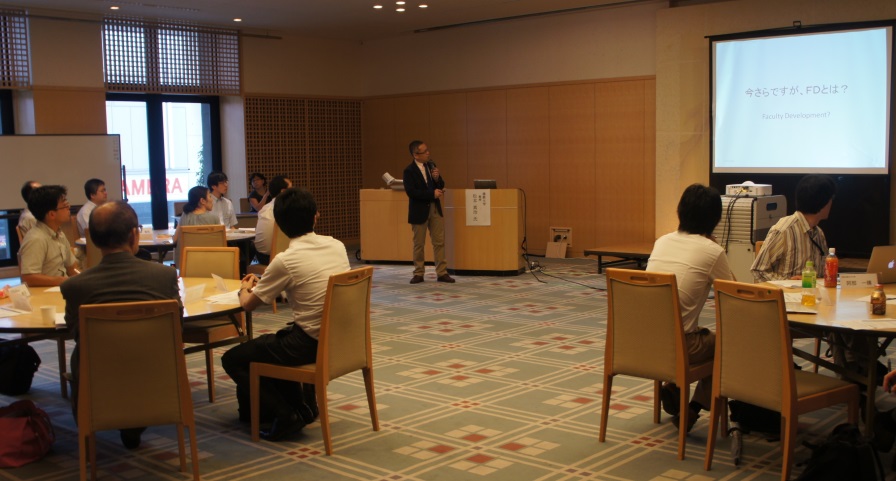
After an icebreaker and a break, the second lecture was “Basic Knowledge and Workshop for Lesson Design” by Professor Takashi Yasuoka of Ritsumeikan University.
Following Professor Yasuoka’s usual class, “Stand up! It started with: The atmosphere in the venue seemed to tighten up.
The lecture was mainly about the syllabus, and the role of the syllabus, how to teach to use the syllabus, and the image of teachers. During the lecture, questions were actively asked, and the enthusiasm of the participating teachers was evident.
In the workshop that followed, the participating teachers used their own syllabus, reviewed the goals of the class, improved the syllabus, and presented the contents.
And “Stand up! The first day of the training has ended.
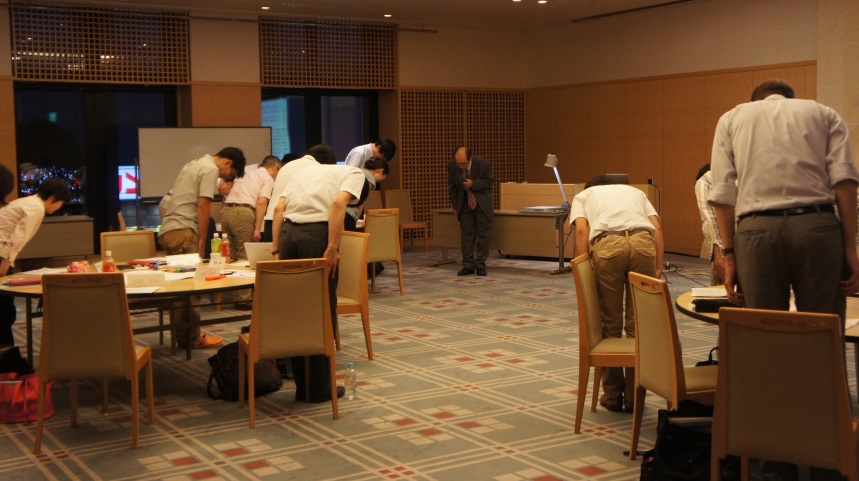
■ Training Day 2
The second day of the training began with a lecture by Dr. Jun Murata of the Support Room for Students with Disabilities, Kyoto University, entitled “Basic Knowledge and Workshops for Learning Support and Special Needs.”
From the question of what a disability is in the first place, he talked about students with disabilities at universities, and this time he explained in detail about students with developmental disabilities. Based on the case study at Kyoto University, he explained the timing and method of support.
In addition, he explained how to communicate with students with developmental disabilities through information transmission games. The participating teachers also enjoyed learning how to explain things in a structured way, how students with developmental disabilities think about things, and how not to assume that what is normal for them is natural for others.
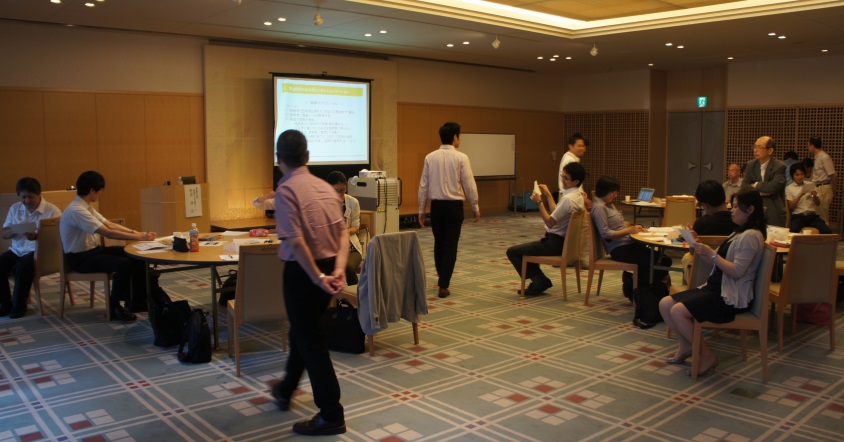
After the lunch break, the final lecture of the two days, “Basic Knowledge and Workshop for Learner-Centered Class Management,” was given by Professor Masanori Shinohara of Bukkyo University.
The lecture began with the question, “Is Michael Sandel’s class learner-centered or not?” while seeking the opinions of the participating teachers. He taught me that in order to make a student-centered class, it is more important to teach the “why” than to teach the “what” and to present specific examples to stimulate the intellectual curiosity of the students. He also introduced the classes that Professor Shinohara is actually teaching and the students’ opinions on them.
In the workshop, the participating teachers reviewed their own syllabus and discussed with other teachers what changes should be made to make the class student-centered.
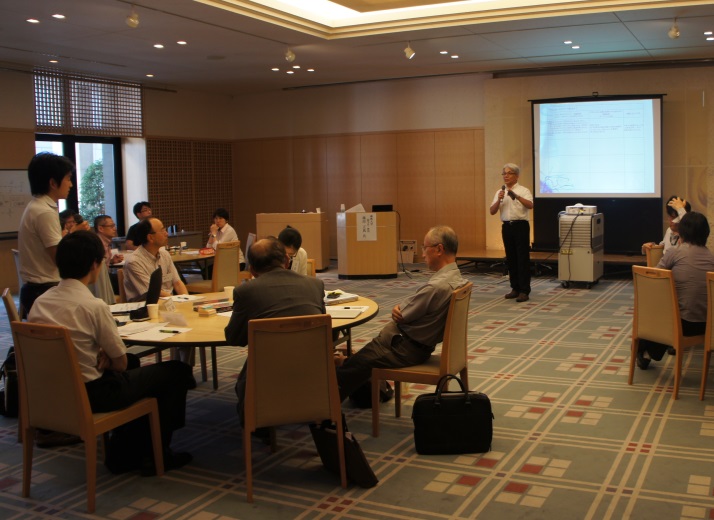
Finally, as a summary of the two-day training, each participant wrote down what they noticed during the training, shared it in the group table, and then posted it on a whiteboard to share with all participants.
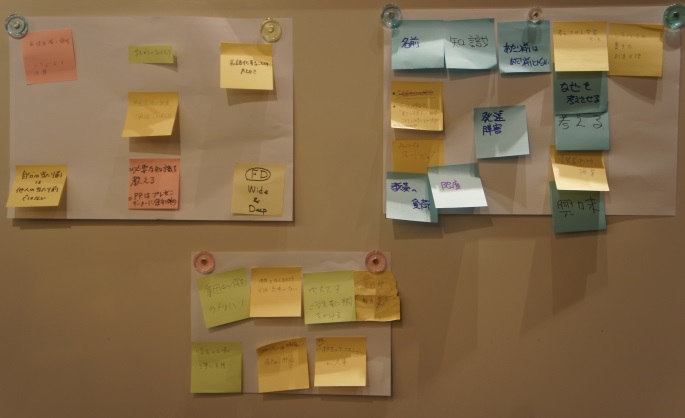
At the end of the training, the 10 teachers who participated in the two-day program were presented with certificates of participation.
Hosted by the University Consortium Kyoto: Joint Training Program ≪ Program B for New Faculty FDs≫
■New Teacher FD Joint Training Program ≪ Program B≫ Implementation Report
On March 7 and 8, 2015, the University Consortium Kyoto held the “2014 Joint Training Program ≫≪ Program B for New Faculty FDs.” This training is planned by the FD Planning and Research Committee and the FD Training Management Team with the aim of supporting the educational activities of new faculty members by providing training to new faculty members in cooperation with universities in the Kyoto area. In addition, since there are many opportunities for participants to talk freely with each other, the training session is also a place for new faculty members to build a new network. This time, six faculty members from three universities participated.
■Training Day 1
The training began with an “icebreaker” and a fun atmosphere.
“It’s almost a new semester, is there anything you would like to try next year?”
The participants introduced themselves and deepened their interaction with each other.
After the icebreaker, Mina Yamamoto, Deputy Secretary General of the Foundation, gave a lecture on “Universities and University Cities in Kyoto” and then worked as a group to come up with a series of lectures on the theme of “Learning in Kyoto.” The conversation in the group work was uninterrupted from beginning to end. In addition, FD committee members, who serve as facilitators for the group, gave advice to participants who were worried about how to proceed with the class, such as “many students are not enthusiastic about the class.”
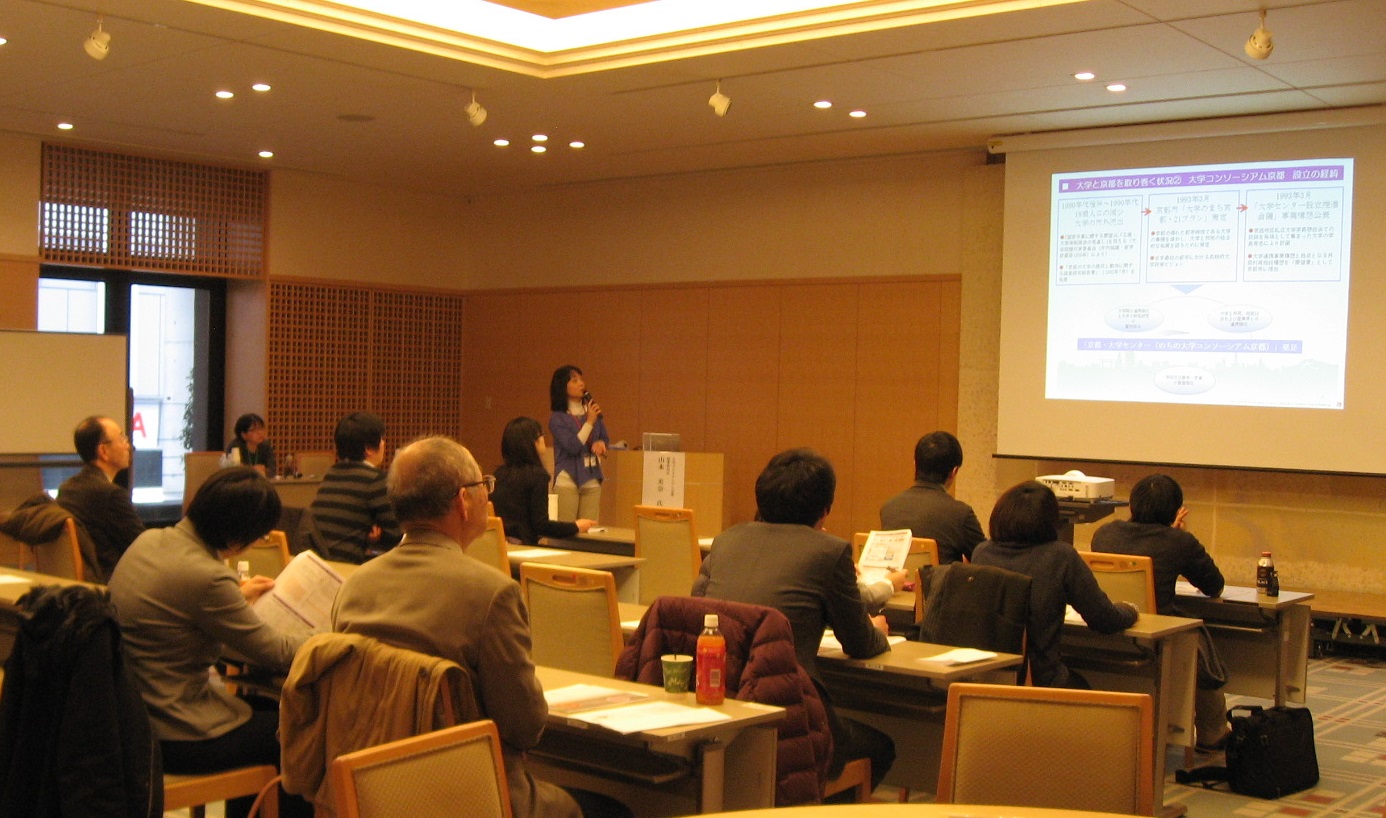
After a break, Mr./Ms. held a workshop for grading. After receiving a lecture from Professor Masashi Wakamatsu of Kyoto Sangyo University on how to assign grades, the participants were divided into groups and examined each other’s syllabus, and the first day of training was completed.
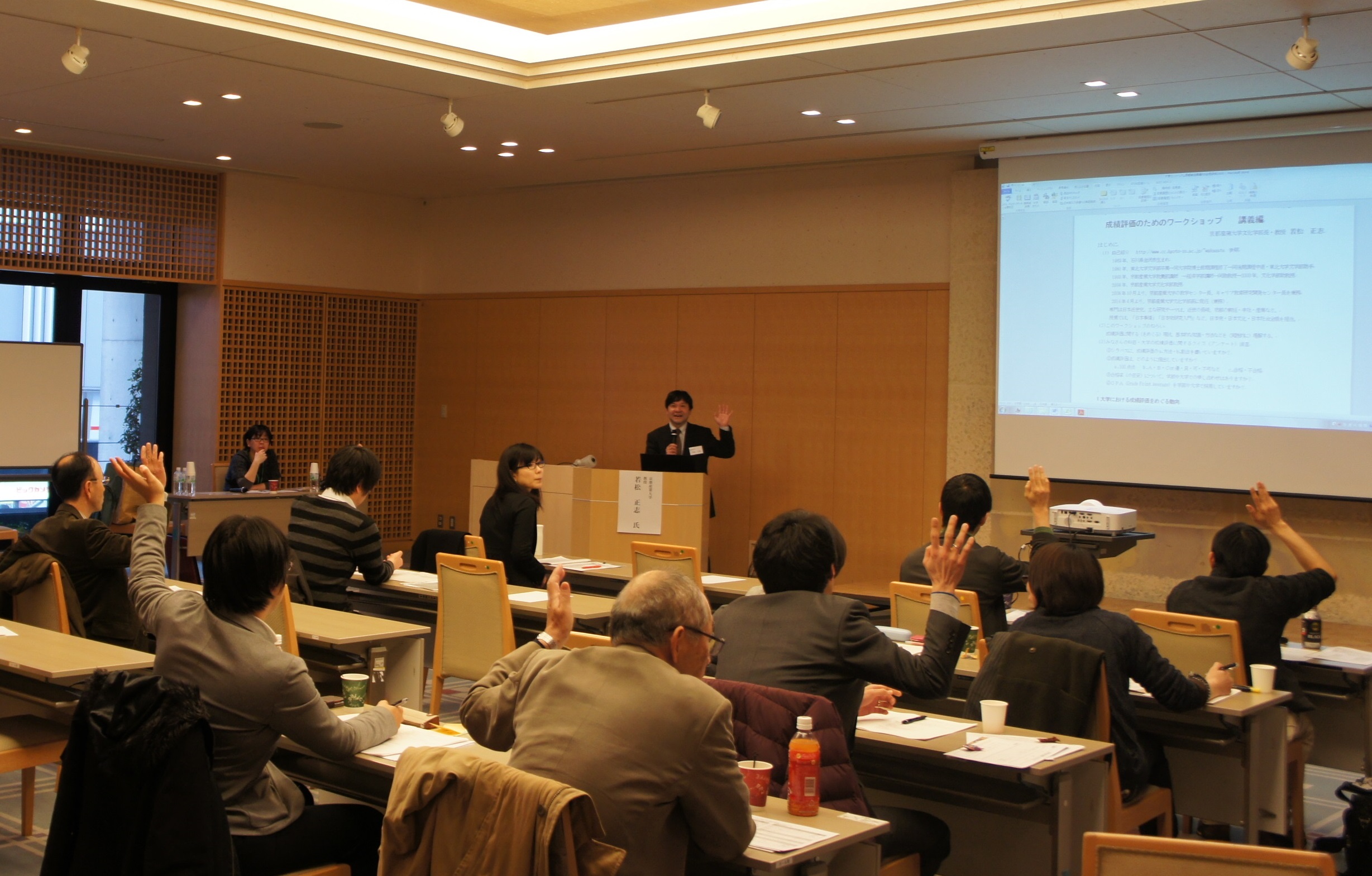
■ Training Day 2
On the second day, we started with a review of the previous day and held a workshop to learn basic knowledge for lesson design. Some of the typical ideas that can be used in lesson design were introduced, and group work was conducted on the theme of “What are the conditions for a good class for students?” using “Mandalat”.
There was no shortage of opinions from the participants, and they listed what was necessary to create an environment where students could easily learn.
After that, we moved on to individual work and spent about an hour designing a mock lesson to be held as an afternoon class practical workshop.
In the afternoon, participants held a 15-minute mock lesson as a “Classroom Practical Workshop” to give feedback and select the best class. By exchanging impressions and advice from the perspective of the participants, and by expressing their impressions and reflections after conducting a mock class, they were able to discover future issues.
At the end of the training, certificates of completion were presented to three participants who participated in the ≪Program B≫ following the Program A≫ joint training ≪Program A held in September 2014.
Inquiries
University Consortium Kyoto FD Project
TEL 075-353-9163 FAX 075-353-9101
〒600-8216 Shimogyo-ku, Kyoto-shi, Nishitoin-dori, Shiokoji, Shimo-ku, Kyoto, Campus Plaza Kyoto
* Reception hours: Tuesday ~ Saturday 9:00 ~ 17:00 (excluding year-end and New Year holidays)














